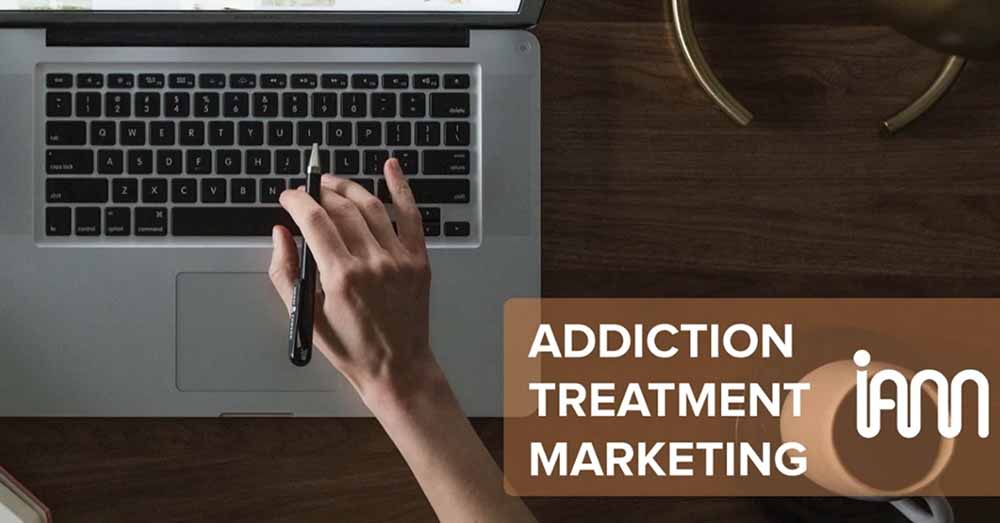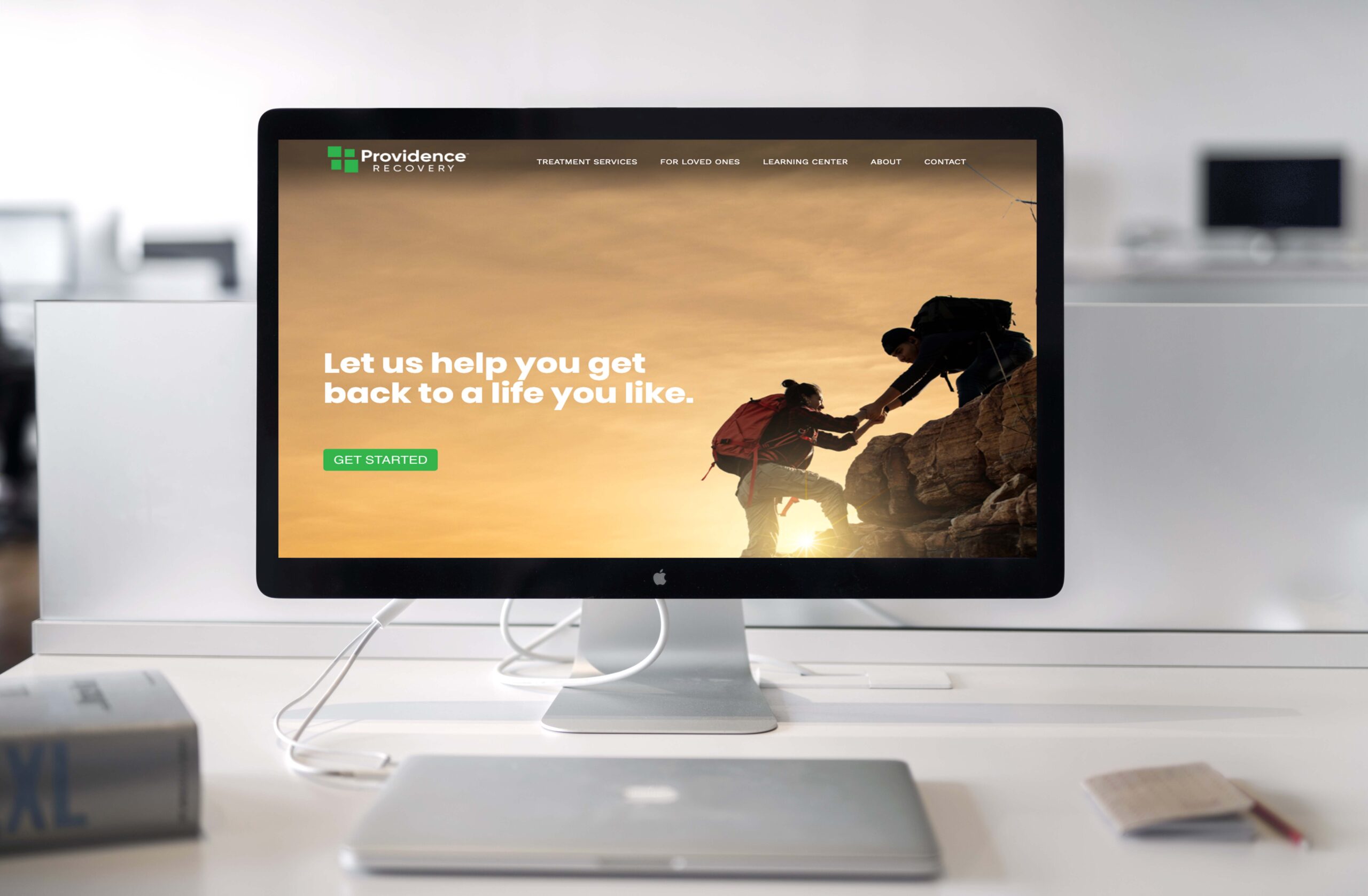As a key stakeholder in an addiction treatment program, you know that addiction treatment programs across the globe face a multitude of problems, including drawing in patients, having individuals within the community not wanting you to move in and ultimately, how to effectively reach the individuals who need you the most.
As a marketing agency that has served many programs throughout the United States, we can tell you that addiction treatment marketing is NOT a one size fits all deal…
…AND it’s a long and arduous process.
For the sake of this article, I’d like to focus on an intensive outpatient program (IOP) and men’s recovery community in Colorado.
This IOP and men’s recovery community opened in July 2019 and was founded by two individuals who had a real passion for rural healthcare. The two founders and their team came to InnerAction Media (IAM). Together, we discussed their desire to develop a program that offered high-quality yet affordable treatment to their community.
Throughout the marketing process, IAM found a couple of obstacles that our client needed to overcome: the Colorado community believes that our client is part of a national franchise, the community had a “not in my backyard” (NIMBY) mentality and our clients found that they have a large volume of patient intake from healthcare referrals, rather than self-refers (stay tuned for why this is an issue for their content, folks).
Learn how we worked to combat these issues with the influence of marketing.
CAN ADDICTION TREATMENT MARKETING COMBAT A “NOT IN MY BACKYARD” MENTALITY?
During the Marketing Blueprint meeting, one of the initial questions our team asks is, “who are you trying to reach?”
We get various answers, but in addiction treatment, there are three categories: the individual who has a substance use disorder, the caregiver (parent, loved one, etc.) and medical professionals. Not only will this question determine the website layout and content development, but it determines how we cultivate the advertising strategy.
The Website
Over the years, IAM found that well-performing websites tend to have a few essential components to it: educational, empathetic, authoritative, compelling and straightforward content and finally, like any good website, search engine and mobile-friendly pages.
During our initial meeting with this client, the two primary target audiences were the caregiver and the individual affected by substance use disorder. At the start of the marketing process, our team recommended designing multiple websites pages that house long-form pieces of content relevant to each particular audience. These types of website pages are called pillar pages, and are beneficial for many reasons.
Firstly, pillar pages encompass in-depth, educational content while positioning our client as an authority on the topic at-hand; this helps build trust with the audience.
Secondly, Google has changed its algorithm (a lot) and one particular change leverages the concept of a pillar page. Google has suggested that 10 percent of its users’ daily information needs to involve learning about a broad topic, which is why one of the changes is to help them find detailed articles. A pillar page is just that. It’s a clearly defined page that discusses a topic comprehensively.
Last but not least, long-form pillar pages CAN help with search engine optimization (SEO). Even though it has a ton of content, it’s all associated with one specific topic – which can help as Google’s algorithm is set up to fine tune your search.
Then, IAM developed the content, keeping in mind that it needed to showcase empathy. Addiction treatment is hard, not only for the individual entering treatment but also for their family and friends.
As mentioned, as this center established itself in the community they faced NIMBY backlash and found that their census came mostly from healthcare referrals. That’s why our team recommended updating the website’s messaging and adding an additional website page specifically for referrals.
The Social Media Strategy
After our team solidified a plan for the website, we discussed social media strategy. Now, unless you’ve been living under a rock, you know that advertising on social media and some search engines is a no-go unless you have a LegitScript certification, which is kind of pricey, especially if you’re just starting up. This is why we opted to still work on an organic presence while searching for other advertising avenues.
For this specific treatment center, they were experiencing a “not in my backyard” (NIMBY) mentality from individuals within its community. NIMBY happens when the community believes that an addiction treatment center coming to their area will bring “addicts,” and ultimately, they will see a rise in crime and homelessness.
Our team had the opportunity to develop and design social media graphics and content centered on why having a local treatment center in their community was better than a national franchise to try and combat this NIMBY attitude.
The Advertising Strategy
IAM knew we couldn’t advertise on social media or search engines. Our clients were also telling us that their community members really listened to the radio and still held onto print advertising. So, our team went with a more traditional route.
We recommended a radio spot highlighting the local aspect of this treatment center, as well as a print advertisement hitting home that individuals who are affected by substance use disorder didn’t need to leave the community they lived in to get high-quality treatment.
PIVOTING A MARKETING STRATEGY
At IAM, we recognize that marketing truly has thousands of different moving parts, and it’s ever-changing. We pride ourselves on maintaining a smooth marketing process that can effectively adapt to a client’s needs and the latest industry trends.
As a new treatment center, you most likely don’t have any exposure or reach. Through our client’s website, we’re able to successfully track how well their website performed for keywords in their area. Additionally, we’re happy to say this client made significant progress (moving from the fourth page of Google up to the first and second page).
Not only has their website been successful in getting them more visibility on search engines, but we’ve also modified messaging when needed. For example, as you know, this treatment center initially wanted to target caregivers and individuals. One year later, they needed to switch gears and focus on healthcare referrals. Our team put a well-organized plan in place after meeting with this client. As a result, we helped pivot their marketing plan, website and social media content.
ADDICTION TREATMENT MARKETING AT INNERACTION MEDIA
West Virginia is known to be the epicenter of the United States of America’s opioid crisis. To us, it’s personal. That’s why we are so passionate about assisting treatment centers around the country to find the best marketing strategy for their specific facility, whatever it may be.
If you find yourself not knowing how to speak or reach patients who truly need you, or you need guidance developing an efficacious marketing plan to combat the NIMBY mentality, please give us a call at 304-241-4959. We would love to help.
{{cta(’16f4d6b4-6755-4a4f-b10c-12c76fd9c9c5′)}}


